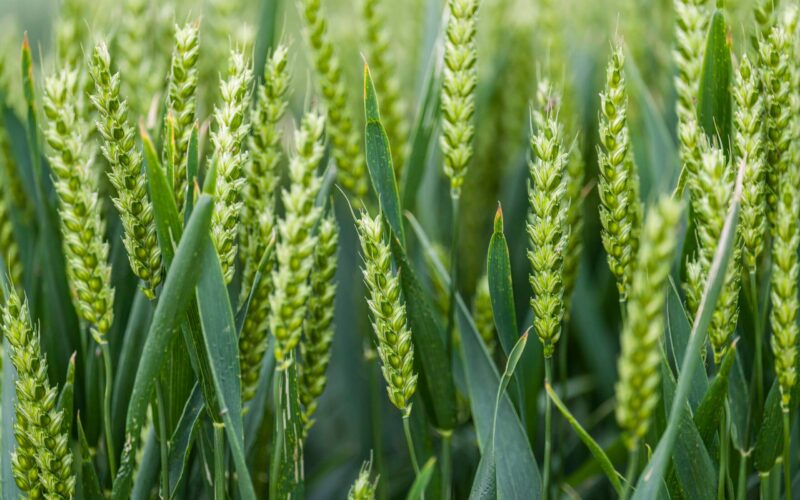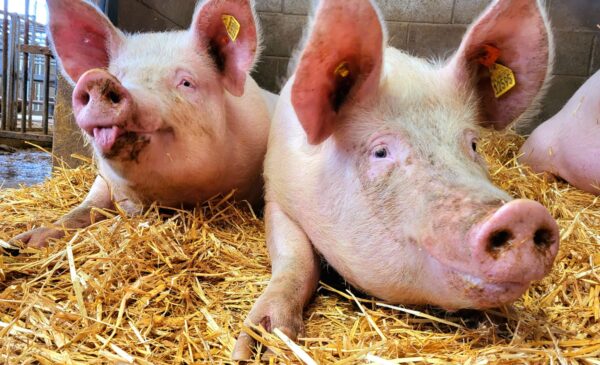Fertilisers can be a critical addition to improving crop (including grass) growth if used efficiently and appropriately in line with crop requirement. Through implementing good practice around nutrient management, farmers can enhance productivity, reduce costs, reduce greenhouse gas and air pollutants emissions, protect the environment, and ensure long-term agricultural sustainability.
- Inorganic fertilisers are those in which nutrients are obtained through extraction or industrial processes.
- Organic fertilisers are those which contain plant or animal-based material, which either occur as naturally occurring process or by-product.
Understanding your fertiliser requirements can lead to better land management, annual reduced costs and a reduction in excess nutrients being lost to the surrounding land and water environment. Examining the variables, including: crop type; crop offtake; previous crop; soil type and texture; soil analysis; organic manure analysis; and weather can help to inform additional nutrient requirements.
Carrying out a soil analysis can show the nutrient, pH and trace element availability per field and indicate where fertiliser use should be prioritised. However, you need to ensure that all the variables are considered to ensure that the soils are prepared for the next crop.
 Figure 1 Crop offtake
Figure 1 Crop offtake
Nutrient budgeting is an essential part of your nutrient management, but detail can be often overlooked. A nutrient budget needs to take into account soil nutrient status from regular soil testing (every 3 to 5 years), nutrients supplied from organic manures and crop demand. It is a working document that will change depending on your rotation.
When crops are actively growing, nutrients are being utilised, however, when the plants begin to decline the nutrients are no longer required. If the balance of what the plant requires to grow is less than the quantity of nutrients held within the soil, there is possibility that these nutrients could be lost out of the soil into the surrounding environment, at a cost to the business and environment.
This nutrient budgeting approach can save money, help to target organic manures around the farm, better manage soil pH, reduce excess nutrient application and reduce the potential for loss, therefore, also protecting the water environment, reducing the emissions of greenhouse gases and air pollutants.
Further information
- More information can be found on the Nutrient Planning and Fertiliser pages on Farm Advisory Service (FAS).
- Online nutrient budgeting software such as PLANET can also help guide you through the nutrient planning process.
- For detailed information on how to carry out these calculations SRUC have produced Crop Technical Notes.
- Technical note (TN 740): Fertiliser recommendations for soft fruit and rhubarb crops
- Technical Note (TN715): Phosphate and potash recommendations for crops grown in Highland and Islands.
- Technical Note (TN716): Phosphate and potash recommendations for crops grown in South West Scotland.
- Technical Note (TN717 ): Phosphate and potash recommendations for crops grown in North East Scotland and Tayside.
- Technical Note (TN718): Phosphate and potash recommendations for crops grown in Fife, Lothian and Scottish Borders.
- Technical note (TN726): Fertiliser recommendations for Grassland.
- Technical Note (TN731): Nitrogen Recommendations for Cereals, Oilseed Rape and Potatoes.
- Technical note (TN734): Fertiliser recommendations for vegetables, minority arable crops and bulbs.
- Nutrient budgeting will help you make most efficient use of fertilisers. Speak to your farm advisor or visit PLANET for more guidance.
Regular soil testing (every 3 to 5 years) will provide you with a snapshot of current nutrient and pH status, can inform your nutrient budget and fertiliser applications, demonstrate good agricultural practice and aid compliance with regulations.
Soil analysis can help you identify areas within the farm, which may require more, or less fertiliser application to target optimum yields. Speak to your local advisor to establish the best suite of analysis for your soils.
Soil testing can be carried out by hand using a soil corer or auger, collecting samples following a ‘W’ pattern across a field. This will give a composite sample for the field sampled. More farmers are looking at precision agriculture and turning to GPS technology, enabling differing pH and nutrient status to be identified within individual fields.
Under the first phase of Track 1 of the National Test Programme (NTP): Preparing for Sustainable Farming, funding is available via Scottish Government until 2024, offering financial support for farmers to undertake soil analysis. Soil analysis should be undertaken by a UKAS accredited laboratory who have ISO/IEC 17025 standard for laboratories competence. Farming For a Better Climate have produce material to explain how to take a soil sample. By doing this you can find out essential information about the pH and nutrients in your soil.
Further information
- The How to Take a Soil Sample guide gives a useful refresher.
- This Practical Guide outlines some of the benefits to the business as a result of soil sampling.
- Funding for soil Sampling via the Scottish Government Rural Payments and Services.
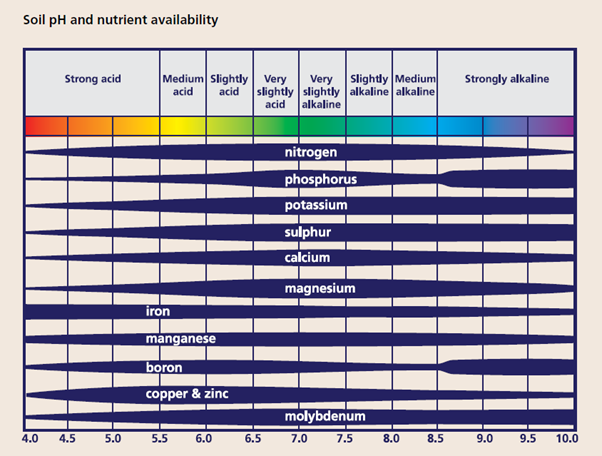
Figure 2 Image sourced from Valuing Your Soils: Practical Guide
Figure 2 shows the nutrient availability at various pH levels. As shown nitrogen and phosphorus are most available at more neutral pH levels, with other nutrients becoming more available at lower and higher pH levels.
Both nitrogen and phosphorus can lead to pollution of water if used incorrectly, with nitrogen contributing additionally to air pollution. This can be at a cost to both the farm business and environment. Farming for a Better Climate have produced a practical guide on Greenhouse Gas Emissions, with a section looking at reducing nitrous oxide emissions.
Nitrogen
Inorganic fertilisers contain nitrogen in various forms, for example as: nitrate, ammonium or urea.
Nitrate is water soluble and losses can occur as a result of three main conditions within the soil:
- Soil moisture content above field capacity.
- Movement of water through large natural cracks.
- Surface run-off.
This is especially a risk following fertiliser applications in autumn and early winter when soil may be bare and there is little crop uptake. Therefore, there is a high risk of loss of nutrients from fertilisers if applied in the autumn/winter months when the crop is not actively growing. Nitrates lost from agricultural activities can contaminate groundwaters used for drinking water and increase coastal eutrophication[1]. This is also a financial loss to the business.
When compared to solid organic fertilisers, such as Farmyard Manure (FYM), nitrate leaching from the application of inorganic fertilisers is of higher risk, as most of the nitrogen is more available in soluble form.
Urea
Urea can be in either a granular or liquid form. It is soluble in water and can be lost to the atmosphere as ammonia, again posing a pollution risk, particularly as air pollution. Once urea is applied to land, a series of natural chemical reactions occur, driven by soil enzymes that convert the urea N into the nitrate form for uptake by the growing crop. Ammonia is produced during part of this chemical transformation which, in this form is at risk of volatilisation to air, representing a loss of nutrients to the farm business and an increased risk to air pollution. Timing, frequency of applications, improving soil structure, use of cover crops to prevent leaching and using protected urea can help to reduce some of these losses. It is not recommended to apply urea to fields with pH above 6.5; in windy, warm weather in any field irrespective of soil pH; and not for second cut silage.
Ammonium
Ammonia can be formed between application and crop uptake. Depending on soil pH, warmer soil temperatures and low soil water content, some ammonium will be converted to ammonia and be volatilised (escape into the air), leading to increased risk of nitrogen deposition elsewhere and a loss to the farm business.
Fertiliser treatments
Aside from timing, method of application and matching fertiliser application to the needs of the growing crop, fertiliser treatments are available that can reduce losses of nitrate and/or its conversion to ammonia.
- Protected urea
Protected urea has been treated with an active compound called a urease inhibitor, either via coating the outside of the fertiliser granule or incorporated within it during manufacture. This treatment effectively reduces the loss of nitrogen to ammonia by blocking the activity of the urease enzyme. For more information Farm Advisory Service have created a frequently asked questions guidance document.
- Nitrification inhibitors
Nitrification inhibitors reduce the activity of nitrifying bacteria in the soil, which convert ammonium to nitrate. The ammonium is still available to the plant but is tightly bound to the soil particles and organic matter, making it less prone to leaching. However, research suggests that the use of nitrification inhibitors can lead to increases in ammonia emissions. This can be mitigated by use of nitrification and urease inhibitors together.
[1] Eutrophication is the increase in concentration of nitrogen, phosphorus and other nutrients in aquatic ecosystems, such as a loch or pond. This increase in nutrients leads to increased plant and algae growth, reducing oxygen within the environment.
Phosphorus
Phosphorus, added to soils as phosphate, is normally strongly bound to soil particles and less susceptible to leaching unless levels are excessively high. Runoff, water and wind erosion of soil particles, therefore, also takes phosphorus off the farm. Soil loss contributes to sedimentation in surrounding watercourses, reducing flow and channel depth. Excess phosphorus in the water can also increases the risk of algal blooms in freshwater (eutrophication), which can be highly toxic to livestock, wildlife and pets.
Therefore, the time and intervals that you apply fertilisers to your land is key to ensuring uptake, and as a result, value for money and achieving your target crop yields. The technical notes below offer recommendations and guidelines to ensure crops demands are met. By ensuring that you regularly carry out soil testing and plan nutrient budgets annually, you can match nutrient requirements to land applications.
Further information
- The Farm Advisory Service have produced material to aid farmers in using fertilisers efficiently and cost effectively.
- For detailed information on how to carry out these calculations SRUC have produced Crop Technical Notes.
- Technical note (TN 740): Fertiliser recommendations for soft fruit and rhubarb crops
- Technical Note (TN715): Phosphate and potash recommendations for crops grown in Highland and Islands.
- Technical Note (TN716): Phosphate and potash recommendations for crops grown in South West Scotland.
- Technical Note (TN717 ): Phosphate and potash recommendations for crops grown in North East Scotland and Tayside.
- Technical Note (TN718): Phosphate and potash recommendations for crops grown in Fife, Lothian and Scottish Borders.
- Technical note (TN726): Fertiliser recommendations for Grassland.
- Technical Note (TN731): Nitrogen Recommendations for Cereals, Oilseed Rape and Potatoes.
- Technical note (TN734): Fertiliser recommendations for vegetables, minority arable crops and bulbs.
Further information
- Protected urea FAQs Protected Urea – Frequently Asked Questions | Helping farmers in Scotland | Farm Advisory Service (fas.scot)
- Evidence review of the efficacy of nitrification and urease inhibitors Evidence review of the efficacy of nitrification and urease inhibitors – FINAL – 10 June 20.docx (climatexchange.org.uk)
Technology developments within the agricultural sector are allowing advancement in both soil testing and the subsequent application of nutrients to crops. Precision applications via variable rate nitrogen, phosphorous, and potassium application technology and global positioning satellite (GPS) systems are allowing for more accurate and site-specific areas to be targeted. This allows areas within the farm that need additional nutrients to receive them. This in turn reduces the likelihood of nutrients being added to the soil when they are not required by the crop, reducing runoff and has the potential to reduce the amount of fertiliser and organic material needed, as only areas requiring additional nutrients are treated, reducing the volume of fertilisers needed, therefore reducing costs (Table 1).
Table 1 Inorganic fertiliser application methods
| Application method | Description | Method | Pros | Cons |
| Broadcast application | Disc Spreader | Spreading fertilisers uniformly across field by means of a twin spinning disc. | Quick application.
Boundary devices can now keep fertiliser spreading within boundaries reducing pollution risk. |
Solid fertiliser requires rain to be washed in.
Widespread widths reduced accuracy with wind. |
| Liquid Application | Sprayer Application. | Application of liquid fertilisers through conventional crop sprayer with adaptations. | Even application to width of sprayer.
Less reliant on rain so more useful in dry conditions.
Better utilisation of sprayer.
|
Storage tanks required minimising potential to forward buy.
Overlap of sprayer can increase crop lodging.
Corrosive to sprayer.
Scorch of crop in frost wind and hot weather. |
| Foliar application | Applied with spray tank mix. | Fertiliser is directly applied to the leaves of the crop. | Leaves directly absorb the fertiliser.
Increased fertiliser use efficiency.
Tailor application to the crop. |
Risk of scorching.
Expensive compared to bagged fertiliser.
|
| Fertigation | Spreading through irrigation system. | The application of fertiliser through irrigation water, predominantly for horticultural crops. | Reduced odour.Reduced ammonia losses due to precision technology.
Reduced water and fertiliser requirement.
|
Installation costs can be high.
Specialist training, technology and knowledge required. Need to ensure that the nutrients within irrigation water are included within nutrient budgeting (for instance calcium within hard water). Ensure that insoluble compounds have not resulted from fertilisers being mixed with water. |
| Banding or side-dressing | For spreading in orchards, and berry production. | Application of fertiliser around plant. | Applies nutrients directly to crop, reducing ammonia loss.
Reduced weed access to fertiliser.
Reduced leaching potential. |
Solid fertiliser requires rain to be washed in. |
For information on organic fertiliser precision application techniques, see PEPFAA Code at Slurry and manure application – Farming and Water Scotland.
Good maintenance and calibration can help to avoid fertiliser striping, crop loss, uneven ripening and environmental issues. Calibration of your spreader can help you make optimum use of bought in fertilisers. It is important to ensure that spreading machines are set to the correct setting for the material that is being spread to land. Ensure that you have read the manual and altered the settings to the material requirements. In addition, ensure that the change of crop height is taken into consideration so the height from spreader to crop height remains at optimum level. For each fertiliser, the machine settings should be referenced within the manual and set to the correct setting for use.
At this time calibration should be done to assess the spreading rate of each fertiliser. Fertilisers differ in size, shape, and density with variation in particle size, all of which impact on spreading.
Further information
- For information on spreader calibration, see this handy video from Farm Advisory Service (FAS).
Air quality: is the term used to describe how polluted the air we breathe is. As a result, when air quality is poor, pollutants in the air may be hazardous to people. The main substance that affects air quality as a result from agriculture is ammonia. This is a nitrogen-based gas, which is released when slurries, manures and nitrogen fertilisers come into contact with the air.
Greenhouse gases: are gases in the earth’s atmosphere that trap heat. The gases are part of a natural process to maintain the heat on earth. However, through human intervention the balance has been disturbed and increased quantity of gas has been released into the atmosphere resulting in global warming and climate change.
Agricultural emissions related to air quality are dominated by ammonia and agriculture accounts for around 90% of total ammonia emissions in Scotland. Unlike emissions of the other main air pollutants, which have declined significantly over the last 30 years, ammonia levels have decreased by only around 12% in this period. Even this modest reduction has started to reverse slightly since 2012. The Scottish Government have produced Cleaner Air for Scotland 2 – Towards a Better Place for Everyone, which discusses ammonia within agriculture and the impact on air quality.
Emissions of air pollution and GHGs from fertiliser use is a significant issue for the agricultural industry. Ammonia and greenhouse gases such as nitrous oxide can be released as a result of using fertilisers on land. Nitrous oxide is produced by nitrogen interacting with soil and water through nitrification and denitrification. These processes are heavily dependent on weather conditions, with wetness and temperature having significant input into the formation of nitrous oxide, hence timing of nitrogen applications is key to maximise nutrient use for the growing crop and reduce losses. Retaining as much nitrogen as possible by reducing losses to the atmosphere or leaching into, for example, ground or surface water bodies will also maximise nitrogen use efficiency, thus optimise returns on farm.
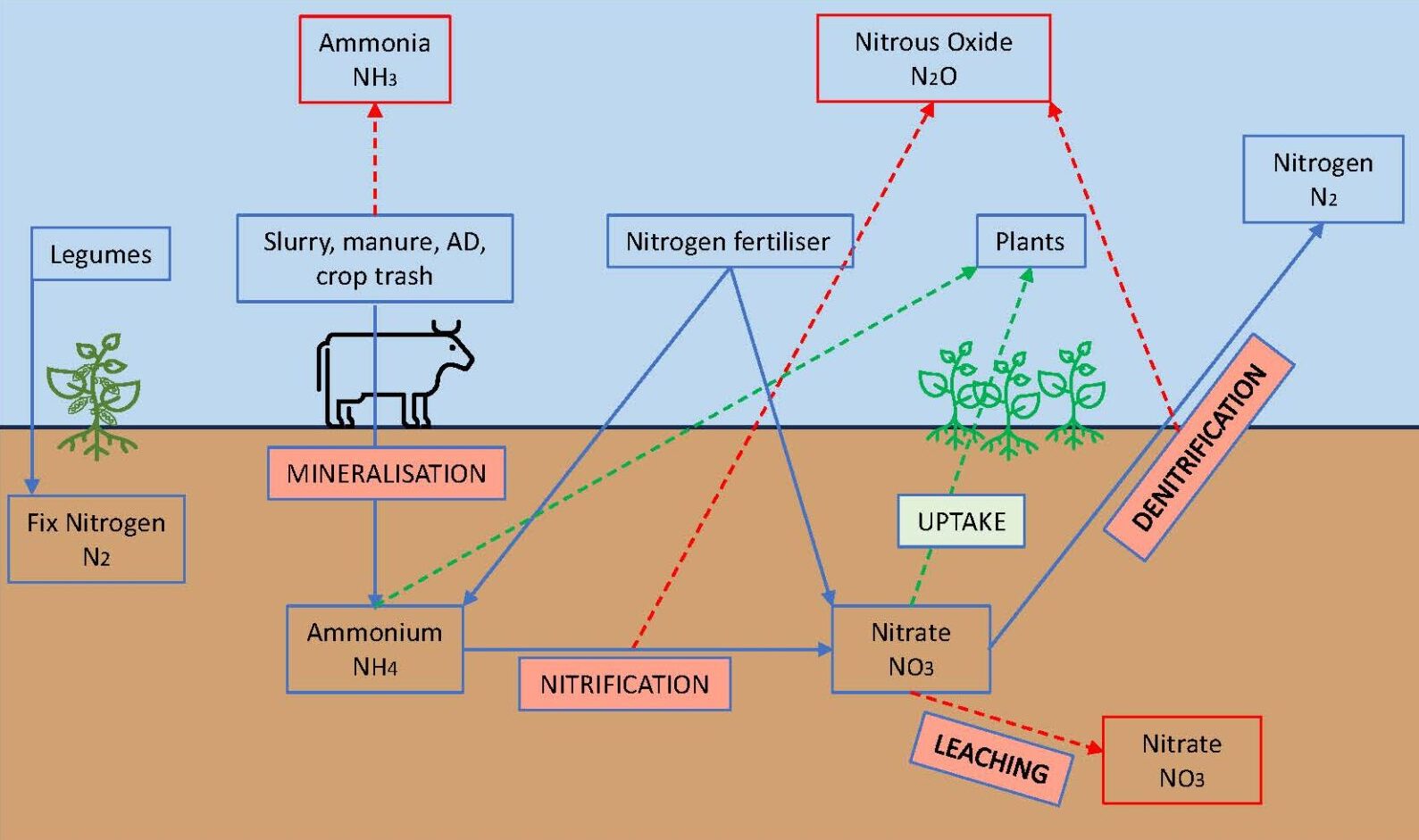
Figure 3 Nitrogen cycle
Through use of precision technology and soil testing, fertilisers can be applied more efficiently and working with crop demand, the sector could decrease the opportunity for GHGs and air pollutants to form and their release to the atmosphere.
- Further information Farming for a Better Climate have produced a practical guide to help reduce Greenhouse Gas Emissions on farmhttps://www.fas.scot/publication/cop26-what-can-farmers-do-reducing-emissions-on-farm-webinar/
- Information on optimising organic nitrogen has been produced by Farming for a better Climate farmingforabetterclimate.org/resource/optimising-organic-nitrogen/
- The Scottish Government have produce the Nitrogen Balance Sheet, information can be found here https://www.gov.scot/policies/climate-change/nitrogen-balance-sheet/
Nutrient loss on farm can lead to financial losses and can create subsequent negative impacts to the surrounding area. These issues can include, for example eutrophication and pollution as a result from soil loss, erosion and compaction. By implementing management systems farmers can offer protection and preventative measures to reduce these impacts.
Examples include:
- Minimising soil loss through targeted cultivations. i.e. across the slope, cultivating after potatoes;
- Match fertiliser application to crop needs via a nutrient budget;
- Utilise cover crops to make sure any surplus nitrogen is being utilised by a crop;
- Improve soil structure, and
- Timing of application.
Cover crops are noncash crops that are designed to benefit crop rotation. There are three categories:
- Cover: designed to cover the soil between harvest and the establishment of the main crop.
- Catch: designed to prevent nitrogen and phosphorus losses from field (i.e. reduce leaching).
- Green manure: designed to improve soil biodiversity, fertility, carbon content and structure.
Although all grown for different reasons farmers will have different motivations for their inclusion within a rotation and it is important that these are recognised before planning a cover crop.
Cover crops can aid farm management, protecting the soil surface from water and wind erosion, and allow essential nutrients to stay on farm, provided they are suitable and well planned for the field and soil type. For further information please visit the PEPFAA section on Protecting and enhancing farms soils.
Buffer strips along watercourses GAEC 1

Diffuse Pollution General Binding Rules (DPGBR) state the minimum distances required for activities near waterbodies. Non-compliance with GBRs can result in Fixed Monetary Penalty fines. Adequately sized and located buffer strips and water margins provide barriers to nutrients entering waterbodies. In addition, they provide additional benefits to biodiversity, reduce erosion risk and aid water management on farm. Buffer strips are primarily uncultivated strips of vegetated land within the field or alongside the field edge and watercourses (or other sensitive habitats). Buffer strips vary in width and composition , however, you must comply with GBRs. Buffer strips provide barriers from nutrients running off fields into nearby waterbodies, allowing nutrients to remain on farm, reducing run off potential. Buffer strips can additionally be used to intercept air-based pollutants and may be a practical option close to designated habitats, speak to your local advisor for more guidance.
Identifying and Alleviating Soil Compaction
Compacted soil occurs when soil layers have been compressed and the soil becomes a solid layer. This can arise from heavy machinery and poaching compressing the soil structure. Wet weather can exacerbate and speed up the compaction process. Compacted soil does not allow for movement within the soil structure so air, water and nutrients cannot penetrate. This can subsequently result in nutrient and soils being washed into waterbodies.
Resource material is available to guide and offer support to reduce areas of compaction and how to prevent/reduce compaction occurring. Techniques include buffer strips, avoid/reduce machinery on the land during wet days, moving livestock onto drier parts of the field to allow soil to recover from heavy rain periods. By implementing these techniques you can lessen the impact of compaction on your land and retain crucial nutrients within the soil.
Understanding your soil structure through carrying out a Visual Evaluation of Soil Structure (VESS) assessment can help you assess your soil structure and assess areas of compaction and help form mitigation techniques to improve the soil. For more information, please visit the Protecting and enhancing farm soils.
Inorganic fertilisers can be a great source of nutrients for crops on farm, however, they have the potential to cause significant pollution if not managed and stored correctly. More information is available in the Know the Rules Factsheet number 11 – Inorganic and liquid fertiliser storage and application. Impermeable tanks used for the storage of liquid fertiliser must have a lockable double valve on the outlet. Figure 4 and Figure 5 show examples of how this can be done. When the tanks are unattended these must remain closed and locked.
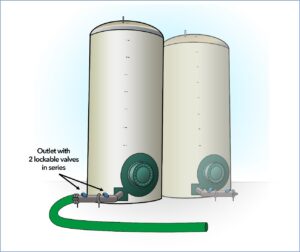
Figure 4 Liquid fertiliser storage tower with double lockable valves

Figure 5 earth bank liquid fertiliser bad with double lockable valves
There are a number of other materials available to farmers, which offer good nutrient content to support growing crops, some of which can be seen in These materials can be an economically viable way to provide and enhance soil fertility, however, they need to be used appropriately and fully accounted for before adding inorganic fertilisers. The spreading to land of these materials needs to be done correctly, and those who are spreading the material need to be properly trained to do so. Before spreading organic material to land you must comply with GBR18 and complete a risk assessment for the respected land including the preparation of a Risk Assessment for Manures and Slurry (RAMS) map, details of what needs to be included can be found here.
When incorporating non-agricultural materials into the soil, it is crucial to consider their composition, any potential contaminants, and appropriate application rates to meet the needs of the growing crop. Farmers should conduct soil tests and speak to their consultant to determine the optimal methods and quantities for using non-agricultural wastes in their specific farming systems. Some materials may require an authorisation from SEPA for storage or prior to application.
Table 2 Common sources of other organic fertilisers.
| Type | Outline | Pros | Cons |
| FYM | Farmyard manures from routine agricultural practices. | Valuable source of nutrients and organic matter.
Recycling organics matter to land.
Can be cost effective.
Improve water holding capacity. |
Potential to cause odour/nuisance issues.
Regular testing is recommended as composition varies.
Needs to be stored and applied correctly.
Ensure NVZ requirements are met.
Ensure that material complies with Farm assurance schemes. |
| Biosolids | Solid waste produced as a byproduct from wastewater treatment plants. | Valuable source of nutrients and organic matter.
Can be cost effective compared to chemical fertiliser.
Reducing the need for chemical fertilisers.
Recycling material.
Not classed as waste product. |
This material should be tested at 6 month intervals, however, regular testing is recommended as product make up is variable.Soil must be sampled before first application.
Potential to cause odour/nuisance issues.
Cannot be used in Organic systems.
Material needs to be tested for potentially toxic elements (PTEs). In addition, the soil needs to be tested before application to ensure that acceptable rates are not exceeded by application.
Ensure you comply with Farm assurance schemes before applying to land.
|
| Digestate | Organic fertiliser derived from the processing of organic material in the absence of oxygen. | Valuable source of nutrients.
Can be available in liquid or solid material.
Can be a cost effective compared to chemical fertilisers.
Reduce the need/demand for chemical fertilisers.
Recycling material. |
Regular soil and material testing is recommended.
Potential to cause odour/nuisance issues.
Your supplier must supply you with a PAS110 certificate or direct assurance that the digestate is derived from non-waste feedstock.
You must register a Paragraph 7 Waste Management Licence Exemption if the material is not PAS 110 accredited.
Ensure you comply with Farm assurance schemes before applying to land.
Liquid digestate must be applied by precision equipment. |
| Composts | Material made from controlled biological decomposition (with oxygen). Either from solely green waste (plant based) or mixed green and food waste. | Valuable source of nutrients.
BSI PAS-accredited composts are not treated as wastes in Scotland and can be applied to land, in accordance with SEPA rules. |
Regular testing is recommended.
Potential to cause odour/nuisance issues.
Composts which do not meet PAS accreditation (off-spec composts), require an authorisation from SEPA prior to application to land. |
| Seaweed | Material derived from seaweed. | Valuable source of nutrients. | Regular testing is recommended.Potential to cause odour/nuisance issues.
|
| Distillery waste | Distillery by-products in solid and liquid form. | Valuable source of nutrients
Recycling material
|
Regular testing is recommended.
Potential to cause odour/nuisance issues.
Liquid material can contain high % of readily available nitrogen (RAN) and must be stored correctly and applied evenly.
Overlaps can lead to lodging. |
Further information
- Fertiliser Industry Assurance Scheme has produced videos on safe storage and handling of fertilisers.
- Farm Advisory Service (FAS) have produced a technical note on Optimising the application of livestock farmyard manures and slurries and Agricultural use of biosolids, composts, anaerobic digestates and other industrial organic fertilisers.
- More information on biosolids assurance scheme can be found here.
- For detailed information on using digestate on farms please find this guidance document and podcasts discussing how to use digestate on farm.
- The Agricultural Industries Confederation (AIC) have produced guidance on Protecting the Environment – The Essential Guidelines for storing solid and liquid fertilisersEnsure that Scottish Cross Compliance is met when referencing these guidelines.
Nitrate Vulnerable Zones (NVZs) are areas where there are restrictions in place to reduce the volume of excess nitrate entering the water cycle. The areas, which are affected can be seen in Figure 6.
Land managers who farm within these areas must follow rules set out in the Action Programme for Nitrate Vulnerable Zones (Scotland) Regulations 2008. Adherence with these rules is also a cross compliance requirement, The Scottish Government has produced Nitrate Vulnerable Zones: guidance for farmers reference material to aid farmers in complying with these regulations.
All farms within these zones must produce a Risk Assessment for Manures and Slurries (RAMS)Map and ensure that they calculate their Nmax[1] correctly for each crop type grown within the designated NVZ.
For full details reference Scottish Governments’ guidance here and the Farm Advisory Service has produce refresher material here. Noncompliance can result in statutory penalties.
When applying organic manures to fields, there is an annual limit of 250kg/ha of total nitrogen from organic manure, in any 12-month period. This applies to all organic manures apart from compost.
Compost that does not contain livestock manure has a field application limit of 500kgN/ha. This limit is applied to each field, unlike Nmax, which is applied at crop type level. The total includes any fertilisers derived from animal, plant or human sources – excepting those deposited by grazing livestock. Within NVZs there are requirements on the required record keeping, storage requirements and specific details on when you are not allowed to spread. For full details NetRegs have compiled a detail list of rules and actions that farms within NVZ need to comply with, which can be found here.
[1] Nmax means the total nitrogen applied as manufactured fertiliser plus the crop available nitrogen from organic manure applications.
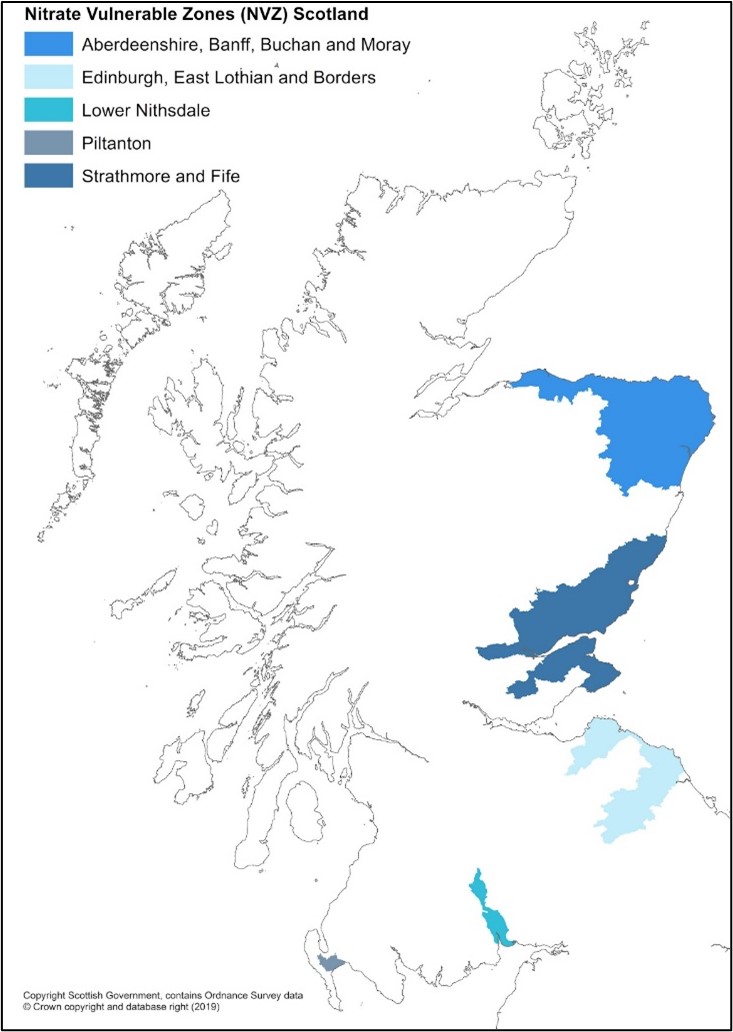
Figure 6 Nitrate Vulnerable Zones (NVZ) Scotland
Related resources
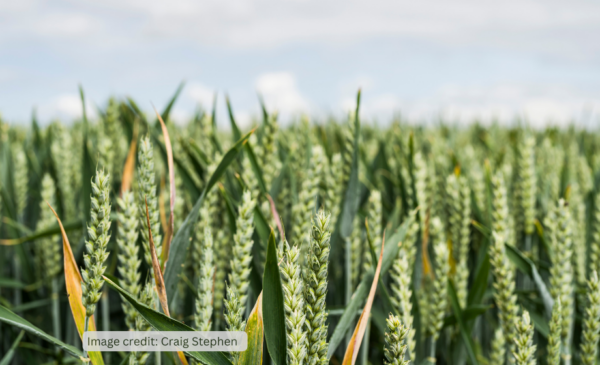
Integrated Pest Management and the Voluntary Initiative
How can you improve pesticide management on farm?
How can you improve pesticide management on farm? In this podcast we chat with Neal…
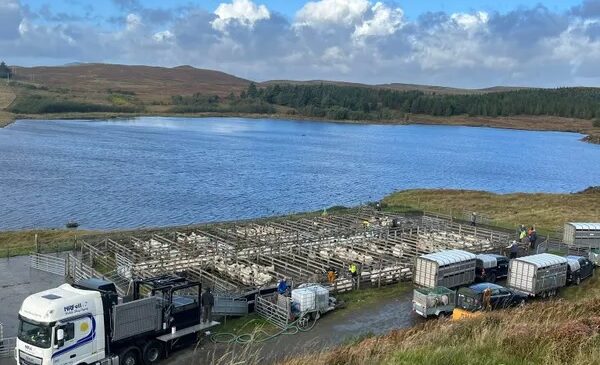
Environmental and animal welfare considerations of dealing with sheep scab
This podcast focuses on how farmers can manage sheep scab. In particular discussing what farmers need to be aware of and the rules and regulations that need to be followed when managing sheep dip from animal welfare, to environmental regulation. Photo credit: ©Neil Fell

